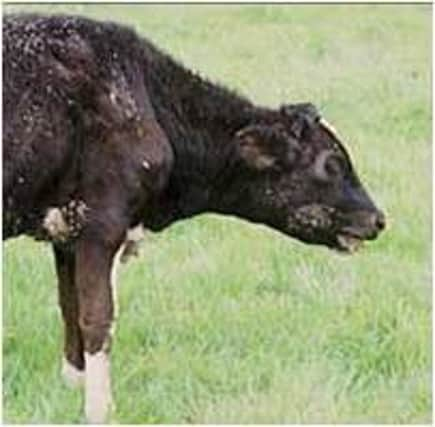DARD Management Notes: Beef and sheep


On many farms autumn calvers will start to calve from August onwards. These cows should ideally be in condition score 3-3.5. They must be monitored to ensure they don’t become over conditioned as this will cause an increase in pelvic fat deposition and associated calving difficulties.
To control condition many farmers graze these cattle on poorer and older swards or use them to clean out fields or paddocks after young stock. Any attempt to reduce condition should be done earlier than six weeks before calving. The last six weeks of pregnancy is critical for successful calving and cows require good nutrition during this period.
Lungworm
Advertisement
Hide AdAdvertisement
Hide AdAs discussed last month parasite control becomes more important as the season progresses. Lungworm can be a particular problem and is at its peak in July and August. An early diagnosis is crucial, take time to monitor young stock for coughing after light exercise/running. In more extreme cases where neck extension and mouth breathing is seen damage is often irreversible. Although more common in young stock it can occur in cows and can result in death with an acute infection.
Grassland
The winter past was quite mild with very little frost. Nobody enjoys frozen pipes, but periods of freezing can be very beneficial to our soils for example improved drainage due to the cracks and fissures freezing produces. As this was not the case over the past few winters, mechanical intervention may be needed via sub-soiling or aerating. After grazing/cutting a period of dry weather is ideal for sub-soiling to create cracks and fissures along with alleviating other soil compaction issues. Success depends on soil dryness, the implement not being worked below its critical depth and the treated soils allowed to stabilise. These works should only ever be done if required; always dig several holes throughout the field to identify the extent of the problem.
Grass covers should be starting to build on farms towards the end of July/early August. To allow for a decline in growth during autumn, aim to have about 25-30 grazing days ahead by mid-September. This will depend on conditions and growth but can be controlled in a number of ways including weaning lambs to allow dry ewes to be stocked tighter.
Sheep: Blowfly strike
Blowfly strike in sheep can be prevented by applying a suitable product before a period of challenge. However it has become increasingly difficult to predict due to unusual summer weather patterns. Shearing has been completed on many farms and this will help, but won’t eradicate the problem entirely. Most strikes (over 70%) occur around the tail or breech due to faecal or urine soiling. The following good management practices will help:
Advertisement
Hide AdAdvertisement
Hide Ad* Dag to reduce soiling and/or remove dirty wool around the breech
* Reduce the incidence of soiling by avoiding nutritional upsets that cause scouring
* Have a good worm control strategy
* Tail sheep
* Avoid breeding from sheep that are habitually struck and/or tend to soil themselves due to their conformation
* Dispose of carcasses quickly
* Reduce the incidence of foot rot
Lameness
Lameness can also raise its head on many farms especially when you are busy with other field work. Rectifying this problem quickly will minimise further escalation. Individual treatments may be adequate if the problem is confined through paring and antibacterial sprays. If a bigger problem exists group treatment using a footbath will be required. For best results allow sheep to stand in the solution for a short time rather than just running through it and stand them in a dry yard for the solution to dry. If using formalin, solutions above 5% can cause severe irritation, therefore avoid ‘topping up’ of footbaths. Mix accurately and avoid solutions over 3%.